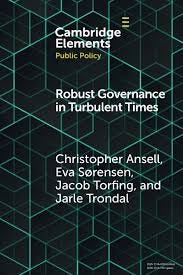At the Center for Catastrophic Risk Managent (CCRM), we talk a lot about the 3Rs: Resilience, Robustness and Reliability. These concepts point to properties of organizations, communities and infrastructures that enable them to ride out a catastrophic event.
Resilience is one of the broadest catchphrases in studies of risk, crisis and disaster. Generally, it signifies the ability to resist or recover from negative impacts. My CCRM colleague Louise Comfort has been a leader (along with Arjen Boin and Chris Demchak) in bringing our attention to the importance of resilience in crisis management.
Think of resilience as a palm tree in a hurricane. Palms are strong, flexible and aerodynamic. A hurricane might bend them over, but they can straighten back up after the storm.
With Eva Sørensen, Jacob Torfing and Jarle Trondal, I’ve argued that robustness has a somewhat different meaning: it signifies the ability to adapt or innovate in the face of multiple challenges while maintaining or improving core functions. Recently, we’ve been building a research agenda around the idea of “robust governance,” arguing that it is important for responding to a variable, inconsistent and unpredictable pattern of change we describe as “turbulence.”
Think of robustness as a racoon, an opportunistic omnivore with highly dextrous paws and a remarkable ability to solve problems. Their adaptability allows them to thrive in rural, suburban and urban environments.
Reliability also has a specific meaning. CCRM colleagues Paul Schulman and Emery Roe describe it as “continuous, nearly error-free operation” and they have led the way in trying to understand the social and organizational factors that make this possible.
Think of reliability as an ancient Roman aqueduct like the Aqua Virgo. Built by Marcus Agrippa in 19 BC, the aqueduct continues to supply water to Rome’s Trevi Fountain in 2025.
All three terms prove useful in thinking about catastrophic risks. For example, a community is resilient in the face of a devastating wildfire when it is able to rebuild after the fire; it is robust when it is capable of “buildng back better”; and it is reliable when it keeps critical services going without major interruption.
Chris Ansell







